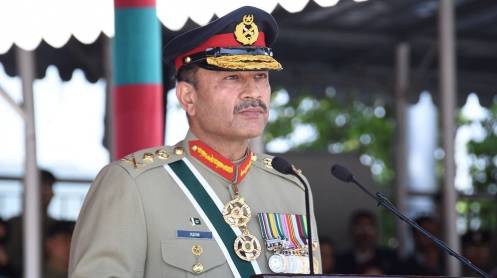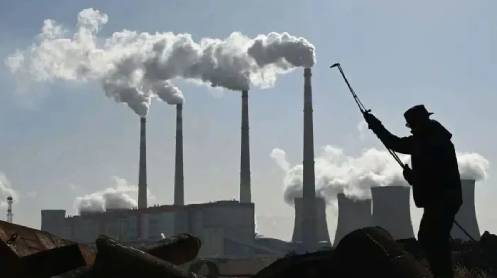Pakistan’s external debt has skyrocketed to almost Rs60 trillion, sending a wave of concern across financial and economic circles. The situation at the internal financial front is not rosy either with the domestic loan hitting the Rs31 trillion mark.
Given the current financial mess, it seems that the IMF tranche will only end up adding more to the pile of unbearable debts, which might take years to repay.
If the country continues to borrow loans at the current pace, it might find itself in a serious situation previously faced by some Latin American countries, which borrowed billions of dollars and pushed their homelands towards a financial meltdown. A few decades back, the ruling classes of Mexico, Brazil and Argentina borrowed over $700 billion alone, creating a number of hardships for their people.
Pakistan could face a similar situation. With declining exports and rising imports, the country will have to borrow more money. There is no hope for a drastic improvement in the economy because all rulers have followed the dictation of the IMF and other international financial institutions since the 1980s, raising energy prices and interest rates.
Currently we need at least $7 billion annually to serve external debts and another $7 billion to overcome the annual fiscal deficit. This means that Pakistan’s external debt could witness a phenomenal surge in coming years – some estimates suggest that the country’s external debt could be as high as $400 billion in the next two decades.
This situation has prompted many politicians, business leaders and financial experts to urge stakeholders to come up with a comprehensive plan to revive the economy and avoid an economic disaster. Prime Minister Shehbaz Sharif has also underscored the need to evolve a consensus over economic issues, urging all parties to agree on a charter of economy.
The prime minister did not elaborate what he meant by the charter of economy. Does it mean that a certain course of action should be taken to revitalize the economy? Does he want all stakeholders to find a panacea that could cure all economic ills? Is he wishing to see an economic model that is supported by all political parties and could be beneficial for the country?
If that is the case, there is no need to evolve a consensus over the question of revitalizing the economy because when it comes to economic policies, all political parties want to follow the same economic model that was trusted upon this country in the 1980s.
From General Zia to Benazir Bhutto, Nawaz Sharif to General Musharraf and Imran Khan to Shehbaz Sharif, all politicians favour policies of liberalization, deregulation and privatization. Have our leaders ever spoken against private capital? Could our politicians say publicly that they do not want to privatize state-run concerns despite the overwhelming evidence that such privatization has played havoc with the lives of millions of people besides causing deindustrialization in the country and heavy losses to the national exchequer?
Our leaders never declared that the state would not dole out relief packages to stock exchanges and large businesses and never pondered over the economic hardships caused by the policies of privatization. Have they ever visited the workers who lost their jobs in the process of privatization, which plunged their families in financial crisis, with some of them even committing suicide after losing employment?
So, when it comes to the economic policies of the country, the strategy of all political parties is the same. Unfortunately, state institutions are sympathetic towards the ideas of privatization, liberalization and regulation. From the media to the judiciary – and the intellectual elite to the political class – all seem to favour neoliberal policies. All of them want to extend unwavering support to this anti-people agenda. All of them have tried to appease private capital by selling state-owned commercial entities at throwaway prices.
All of them repeat the mantra of overstaffing in government-run industries and commercial entities to justify the privatization of these public entities. All have resorted to false propaganda of loss-making entities without pointing out the factors behind such losses.
If the prime minister and members of the ruling alliance really want a charter of economy, they should first explain how their economic policies are different from those of Imran Khan. In what way is Miftah Ismail’s pro-liberal agenda different from pro-rich and market-oriented policies of Shaukat Tarin, Hafeez Shaikh or even Moeen Qureshi and Shaukat Aziz?
The PTI government burdened people with inflation, and now the Shehbaz government is increasing this burden. The PTI tried to privatize state-run entities, and the current government of ‘Khadim-e-Ala’ is also planning to auction state-owned industries and business entities.
The prime minister and his economic team will also have to get rid of this business school philosophy which asserts that states cannot do business. They should study the economies of the countries that have planned and command economies. For instance, the USSR lost around 27 million people during the Second World War besides witnessing the destruction of hundreds of cities and towns and over 32,000 industrial units. But despite all this, the USSR was the second-best industrial country in the world in 1956, a notch behind the US.
China also witnessed phenomenal economic growth under a planned economic model with economic growth during the time of Mao almost hitting five percent on average and life expectancy rising from 37 in 1949 to almost 62 during the 1970s. Literacy and other social indicators also improved.
Central and eastern European countries also developed under the command economy with almost all countries in the two regions demonstrating miracles in the health, education, housing and industrial sectors. This was despite the fact that China and Poland were among the states that witnessed the highest number of killings after the USSR during World War II. The sanctions imposed on the socialist camp should also be taken into consideration while reviewing the economic performance of these states.
The prime minister and his team of experts should also explain the real causes behind the losses of public entities. Is it merely a coincidence that after the policies of liberalization in the 1980s, all state entities started incurring losses? Pakistan International Airlines (PIA) that helped build two prestigious airlines is not on the verge of destruction because of overstaffing, but due to the sale of its lucrative routes to a foreign company.
Pakistan Railways is incurring losses because its freight was doled out to a logistic company that has not only added to the railways’ problems but also caused the import bill to skyrocket. The production of Pakistan Steel Mills has come to a halt because its expansion programme of producing two-million ton steel was not implemented by dictator Zia.
The ruling elite must answer why their own businesses touch the heights of success when they employ their business skills, but when the same skills are applied to national entities, they start incurring unsustainable losses. If the charter of economy is to be evolved, the conflict of interest issue should be addressed. It should be investigated why some banks were handed over to private capital for peanuts and why IPPs are showered billions of rupees by every successive government.





